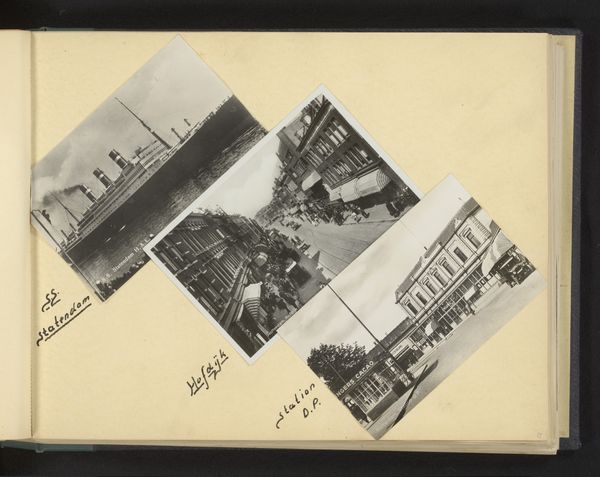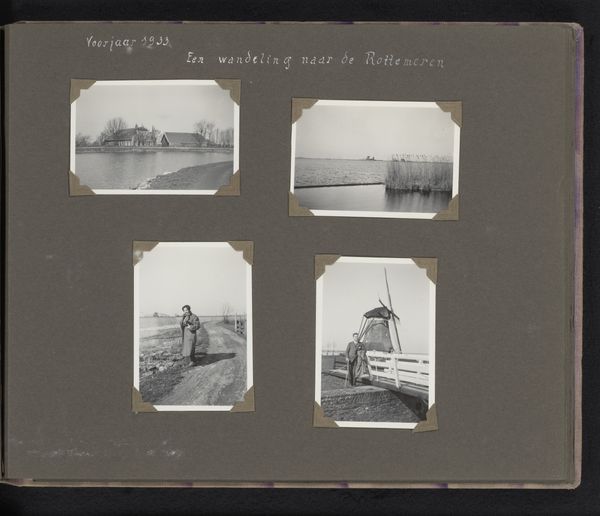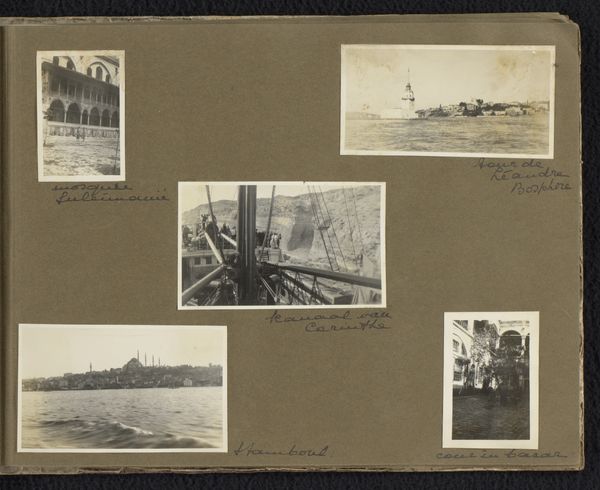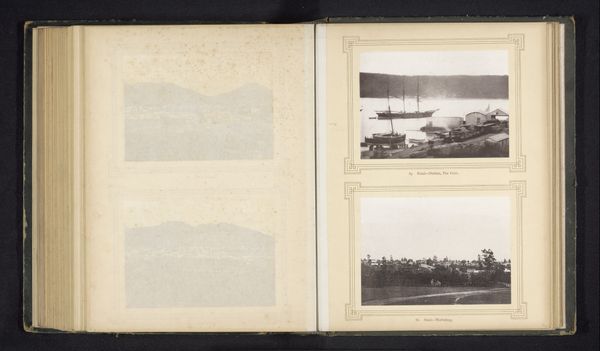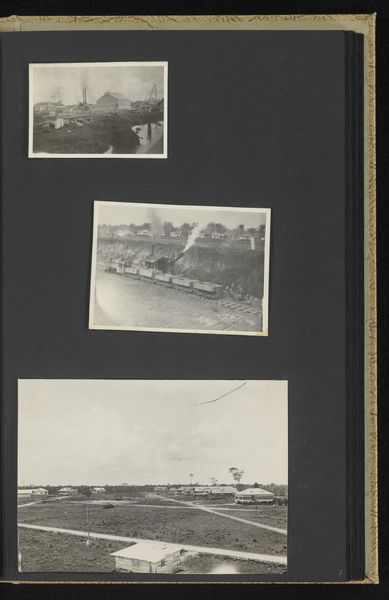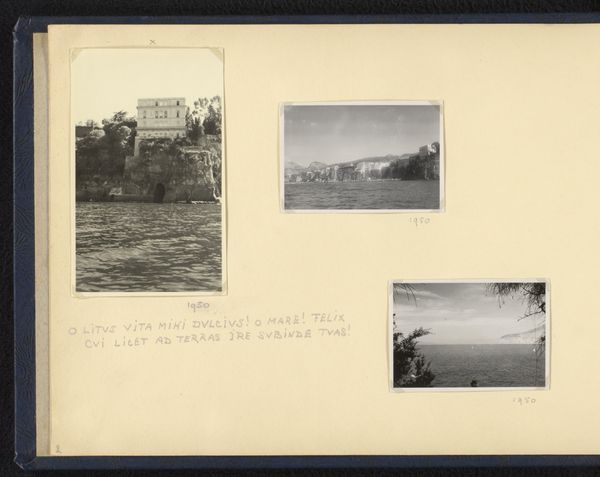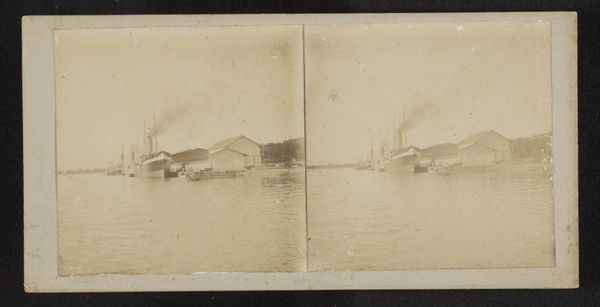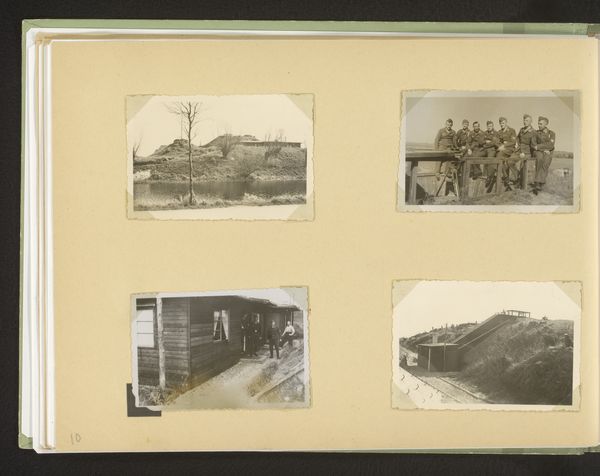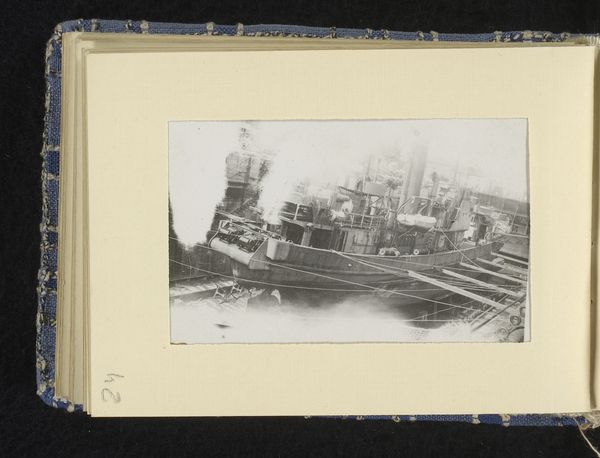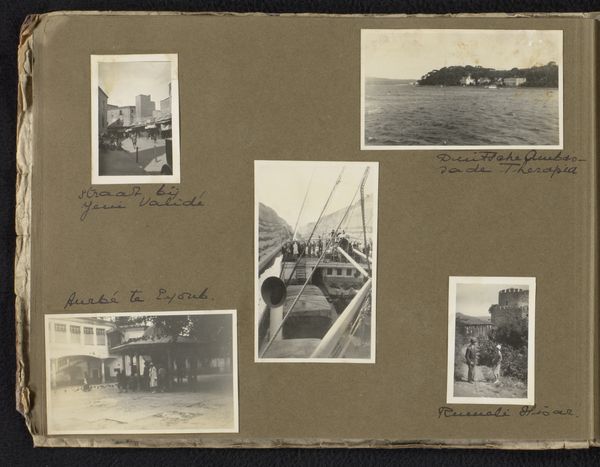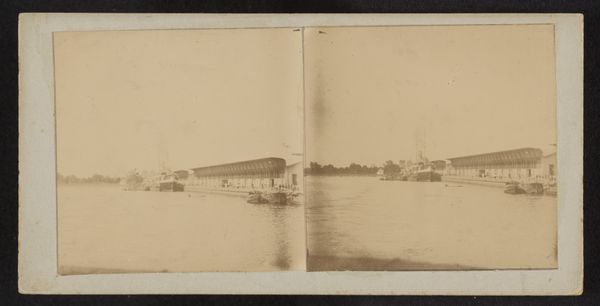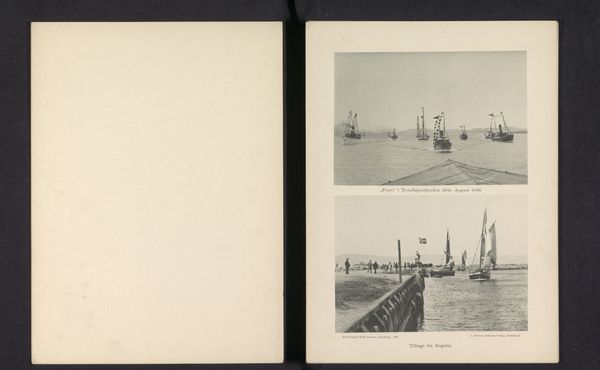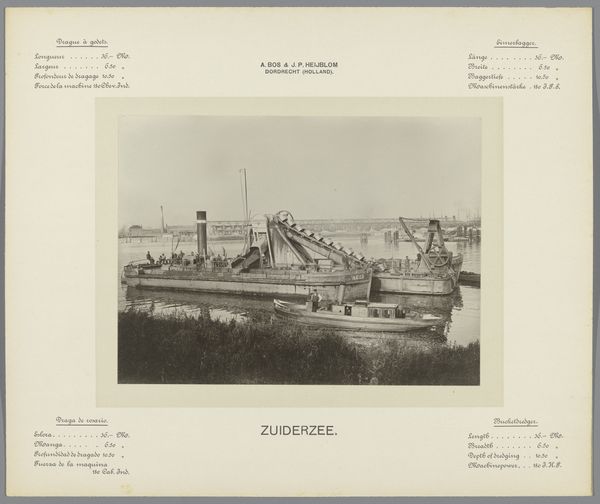
photography, gelatin-silver-print
#
landscape
#
photography
#
gelatin-silver-print
#
cityscape
#
modernism
#
realism
Dimensions: height 112 mm, width 145 mm, height 237 mm, width 303 mm
Copyright: Rijks Museum: Open Domain
Editor: Here we have "Verwoestingen te Deventer," a gelatin-silver print by Arnoldus Vrauwdteunt, from 1940. There's such a strong sense of place here, yet something ominous hangs in the air. How do you interpret this photograph? Curator: It's interesting how Vrauwdteunt documents this moment. 1940... that places it at the beginning of the Nazi occupation of the Netherlands. Knowing that historical context, what was perhaps initially seen as simply a cityscape takes on a much more potent meaning. The "verwoestingen" – destructions – in the title guide our interpretation, of course, but so too should the visual and cultural codes of documentary photography during wartime. What effect do you think the photographer intended by placing these particular images on one page? Editor: That's fascinating! I hadn't considered the strategic choices involved in capturing and presenting these images. The dual scenes feel very intentional now—on one half Deventer shipyards and the other a Deventer station on fire, it communicates the full extent of the impact of the war. Do you think the photographic medium itself adds to the sense of realism or objectivity here? Curator: Absolutely. The perceived indexicality of photography—its seemingly direct connection to reality—lent a powerful air of authenticity, regardless of the manipulations that might have been involved. But even more telling, is the archive they construct. We are invited to see, study, reflect and consider whose view point of reality the selection constitutes. Considering the devastation represented here, for whom do you believe the artist was documenting these events? Editor: I never considered the point of view being constructed here, especially not through choices such as how to situate the photographs, thanks for the insight! Curator: And thank you, considering a photograph’s location, its "home", offers us an intriguing layer in our reading.
Comments
No comments
Be the first to comment and join the conversation on the ultimate creative platform.
